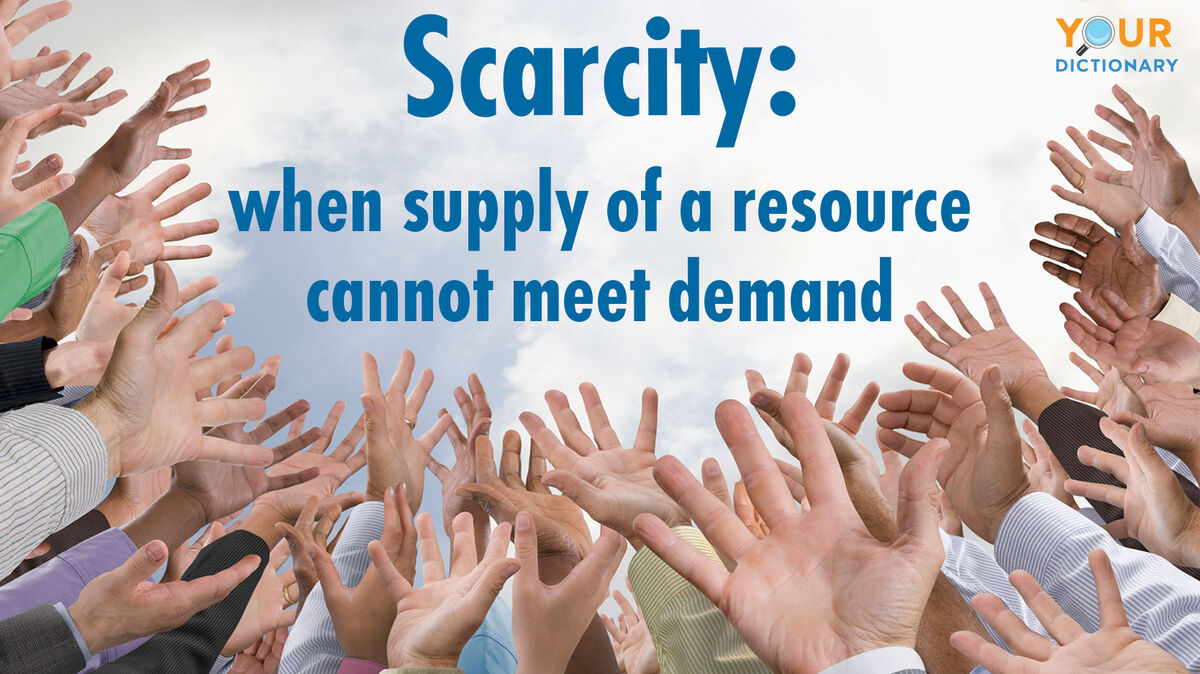
Scarcity means that there are fewer resources than are needed to fill human wants and needs. These resources can come from the land, labor resources or capital resources. Keep reading for scarcity examples that you may see on a global economic level or in your everyday life.
Understanding Scarcity
What is scarcity? Scarcity indicates that demand for a resource cannot be met. These resources could include natural resources, such as crops and water, or economic resources, such as labor and land. There are two types of scarcity, depending on the scarcity's nature: relative scarcity and absolute scarcity.
Examples of Relative Scarcity
Relative scarcity occurs when resources are scarce relative to the public's demand. When more people want a resource, it creates a shortage caused by slow distribution or limited supply. The resource exists, but the people cannot get it immediately. Economists consider relative scarcity as a basic element of economics.
Relative scarcity examples include:
News about a temporary gasoline shortage can result in panic and long lines, leading to an even bigger shortage.
Hoarding of toilet paper and hand sanitizer during a pandemic causes a disruption in the supply chain of these products, leading to scarcity in stores.
A particularly bad flu season inspires many more people to get the flu vaccine in the next year, but vaccine supply does not meet demand.
An increased need for military assistance causes a country to deploy more soldiers, but there are not enough enlisted soldiers to meet demand at the moment.
The demand for wood to build more houses leads to a depletion of local forests and, eventually, a shortage of lumber.
A popular video game system sells out on its first day of release, leaving some consumers waiting for the next available shipment.
Examples of Absolute Scarcity
Absolute scarcity refers to a situation in which there is simply not enough of a resource to go around. Unlike relative scarcity, absolute scarcity cannot be resolved by increasing supply or improving distribution. Demand has little to no impact on absolute scarcity; the resource is gone, or nearly gone, and cannot be increased.
Absolute scarcity examples include:
- After poor weather, corn crops did not grow resulting in a scarcity of food for people and animals and ethanol for fuel.
- Fewer local farmers raising cattle can result in a scarcity of milk and cheese.
- Overfishing can result in a scarcity of a type of fish.
- A wildfire temporarily causes pollution in a city, leading to a scarcity of clean air.
- Coal is used to create energy; the limited amount of this resource that can be mined is an example of scarcity.
- A day has an absolute scarcity of time, as you cannot add more than 24 hours to its supply.
- Those without access to clean water experience a scarcity of water.
- An avian flu wipes out millions of chickens, creating a scarcity of eggs.
- A town has a mandate on limiting new developments, creating a scarcity of land to build upon.
- A recent flood washes farmlands away and has the potential to create a scarcity of food for the residents of the nation.
- An undereducated population in a country that needs high-level skilled workers can result in a scarcity of labor.
No Scarcity of Knowledge
Understanding the concept of scarcity is just part of the journey. It's important to know whether scarcity is relative and can be resolved, or is absolute and threatening to life. Explore more economic basics with these examples of goods and services in the economic supply chain.